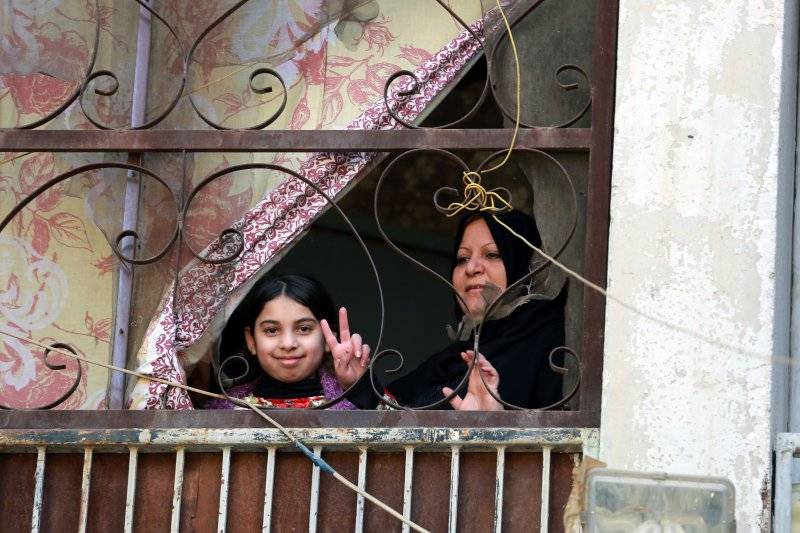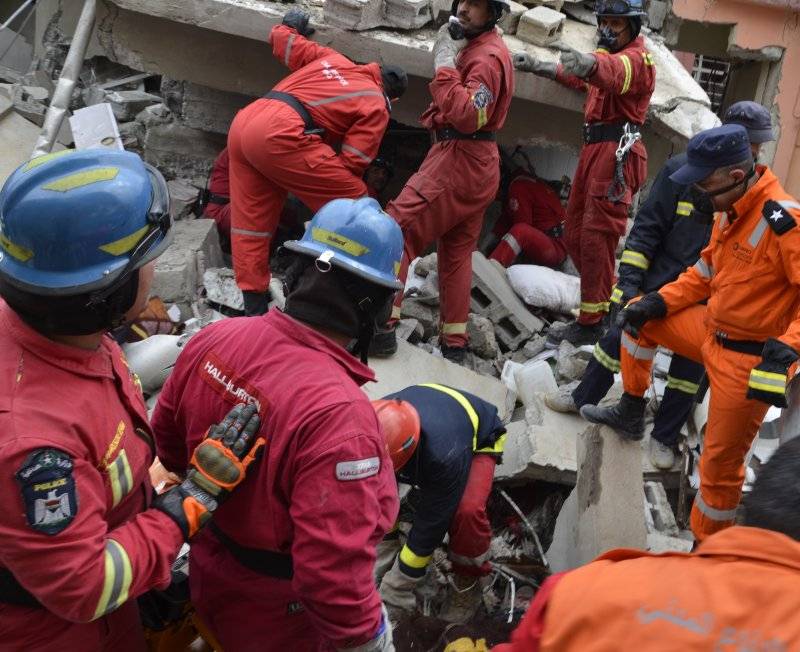Bleipriester
Freedom!
This happens while the US political figures are busy to condemn the pro-government operations in Aleppo.
"(TASS) The coalition has conducted 21 air strikes on Iraq’s Mosul and its suburbs in the past day alone whereas neither Russian nor Syrian warplanes have been used in Syria’s Aleppo for more than two weeks, Russian Defense Ministry Spokesman Igor Konashenkov said on Tuesday.
"Mosul is being bombed daily from B-52H American strategic bombers, F/A-18 bombers based on USS Dwight D. Eisenhower aircraft carrier and from Rafaele M base on the French aircraft carrier Charles de Gaulle. In the past day alone, the coalition warplanes flied 25 sorties and delivered 21 air strikes on the city and its suburbs," he said.
Meanwhile, the Russian and Syrian warplanes "have performed no flights in Aleppo for more than two weeks," he stressed.
Mosul vs Aleppo
The situation in Iraqi Mosul differs from that in Syrian Aleppo in the absence of humanitarian corridors, journalists, volunteers and activists, Konashenkov told reporters commenting on a statement by US Department of State’s spokesperson John Kirby, who earlier said the situations in Aleppo and Mosul are "radically different" from each other.
Konashenkov said representatives of the UN, Red Crescent and other international organizations, as well as journalists work in Aleppo. Besides, the city has six humanitarian corridors, Konashenkov said, adding that civilians cannot use them as they are mined and shelled by gunmen.
"In Mosul, by a strange coincidence, there are no journalists, activists or volunteers in ‘helmets’ of ‘white’ or any other rainbow shade. Nobody. That is why, all what American and European TV channels can afford to broadcast is cheerful censored reports about extraordinary successes of the coalition and future great victory over terrorists, not substantiated by factual footage," he said.
Humanitarian corridors in Mosul were not even discussed, "as if the city with a population of one million is populated only by terrorists".
"And after this John Kirby states feeling insulted that unlike in Aleppo, the operation in Mosul proceeds in strict compliance with international humanitarian law," he stated.
The ground operation to free Mosul from Islamic State terrorists was launched on October 17. Taking part are Iraqi troops, Kurdish forces and the international coalition.
Meanwhile, a humanitarian pause continues in Aleppo - Russian warplanes have been making no strikes for already 16 days, eight humanitarian corridors were opened for civilians and gunmen. However, terrorists continue shelling these corridors and don’t let civilians leave the city."
Russian defense ministry says situation in Mosul is nothing like in Aleppo
"(TASS) The coalition has conducted 21 air strikes on Iraq’s Mosul and its suburbs in the past day alone whereas neither Russian nor Syrian warplanes have been used in Syria’s Aleppo for more than two weeks, Russian Defense Ministry Spokesman Igor Konashenkov said on Tuesday.
"Mosul is being bombed daily from B-52H American strategic bombers, F/A-18 bombers based on USS Dwight D. Eisenhower aircraft carrier and from Rafaele M base on the French aircraft carrier Charles de Gaulle. In the past day alone, the coalition warplanes flied 25 sorties and delivered 21 air strikes on the city and its suburbs," he said.
Meanwhile, the Russian and Syrian warplanes "have performed no flights in Aleppo for more than two weeks," he stressed.
Mosul vs Aleppo
The situation in Iraqi Mosul differs from that in Syrian Aleppo in the absence of humanitarian corridors, journalists, volunteers and activists, Konashenkov told reporters commenting on a statement by US Department of State’s spokesperson John Kirby, who earlier said the situations in Aleppo and Mosul are "radically different" from each other.
Konashenkov said representatives of the UN, Red Crescent and other international organizations, as well as journalists work in Aleppo. Besides, the city has six humanitarian corridors, Konashenkov said, adding that civilians cannot use them as they are mined and shelled by gunmen.
"In Mosul, by a strange coincidence, there are no journalists, activists or volunteers in ‘helmets’ of ‘white’ or any other rainbow shade. Nobody. That is why, all what American and European TV channels can afford to broadcast is cheerful censored reports about extraordinary successes of the coalition and future great victory over terrorists, not substantiated by factual footage," he said.
Humanitarian corridors in Mosul were not even discussed, "as if the city with a population of one million is populated only by terrorists".
"And after this John Kirby states feeling insulted that unlike in Aleppo, the operation in Mosul proceeds in strict compliance with international humanitarian law," he stated.
The ground operation to free Mosul from Islamic State terrorists was launched on October 17. Taking part are Iraqi troops, Kurdish forces and the international coalition.
Meanwhile, a humanitarian pause continues in Aleppo - Russian warplanes have been making no strikes for already 16 days, eight humanitarian corridors were opened for civilians and gunmen. However, terrorists continue shelling these corridors and don’t let civilians leave the city."
Russian defense ministry says situation in Mosul is nothing like in Aleppo



